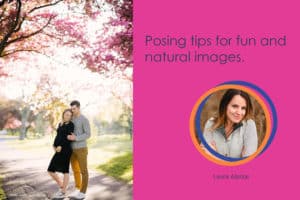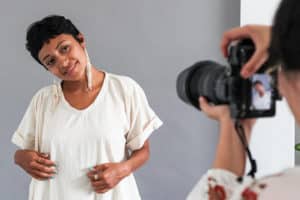Tips and Techniques for Equestrian Portraits, Dressage, Show Jumping, and Horse Racing Photography
August 11th, 2023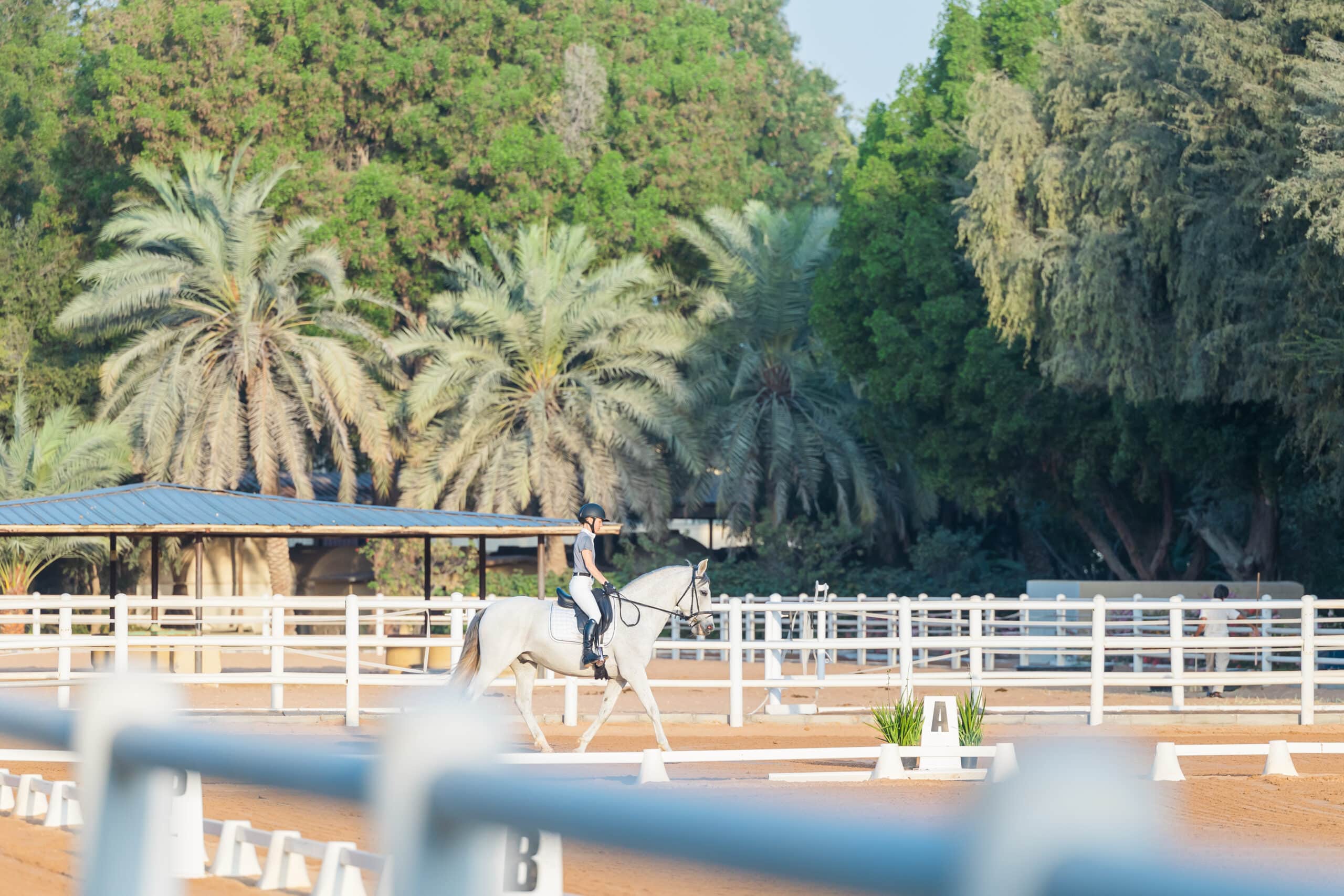
Horses aren’t just majestic; they’re basically living, breathing art pieces that also happen to be full of personality.
And you?
You’re about to become the photographer who easily captures their every mane flick and hoofbeat. Whether you’re photographing a still portrait or a full-speed, “I-may-jump-this-fence” gallop, we’re here to help give you the basics to show up to any equine session or event confidently.
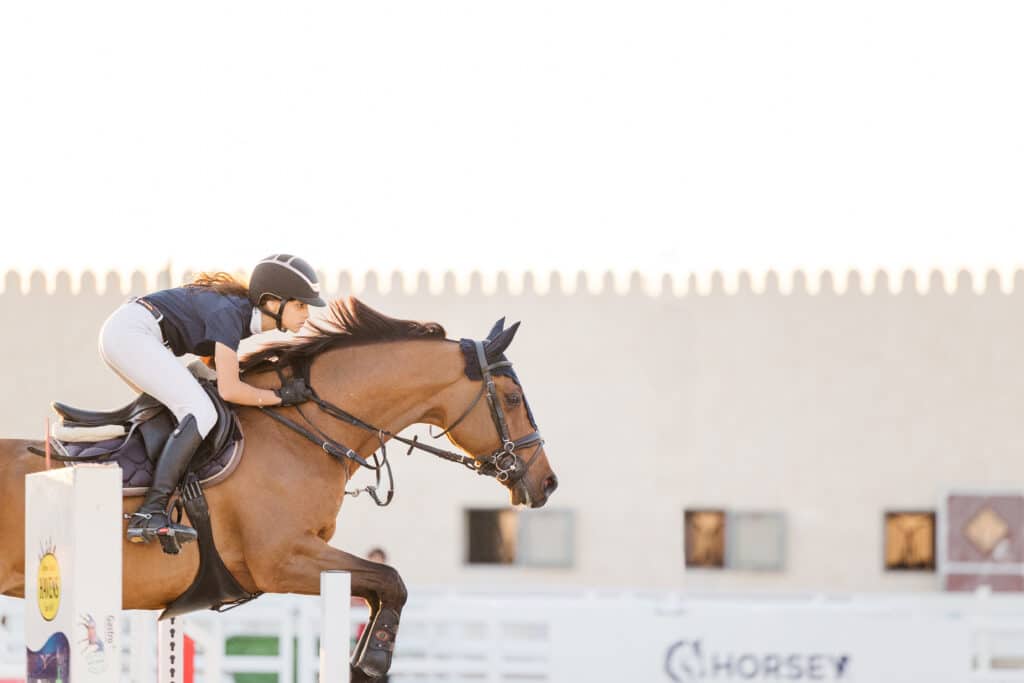
We will help you understand how to get started in equine photography, some basic facts that set this niche apart from other types of photography, and a few tips and tricks to make your images stand out.
Quick Tips if You’re Just Starting Out in Equine Photography
Before you start a session, there are a few essential things to remember about horses.
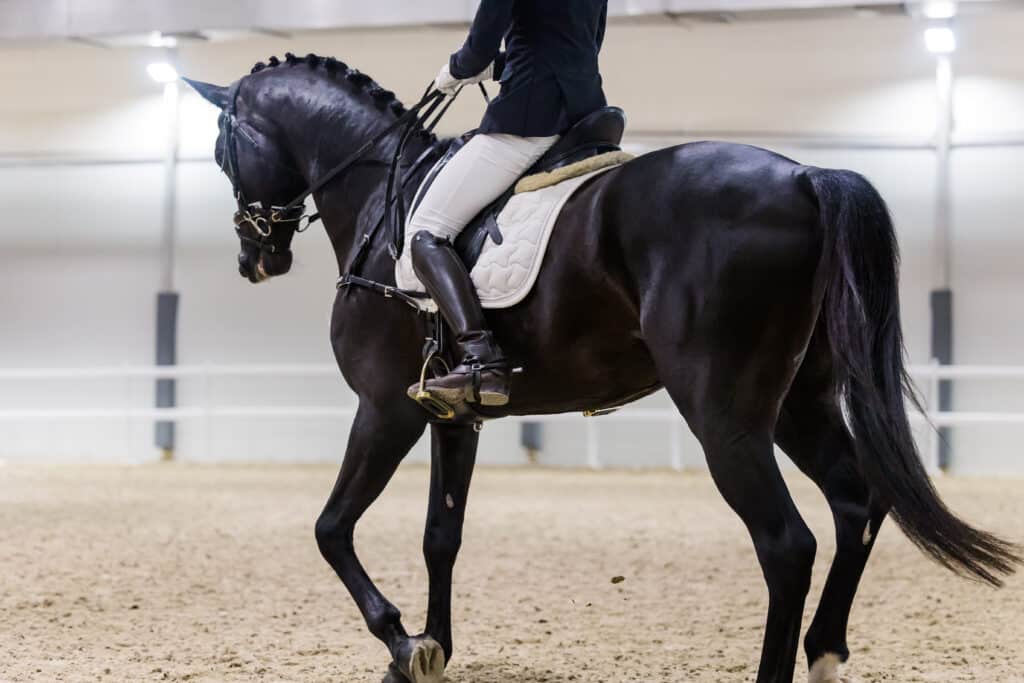
Be gentle and mindful of the horse’s body language
If you plan to work with a horse more closely, like for portraits or close-up images, ask the owner, trainer, or stable manager about the horse’s personality. We’re not trying to get kicked, amirite?
Here are some questions to ask before a session:
- Does the horse tend to react to sudden movements or noise?
Pro tip: turn your camera’s shutter to silent/electronic mode to be safe.
- Does the horse mind if you touch them?
- Does the horse kick, bite, or spin at a moment’s notice?
- Can you give them treats? (Carrots and apples tend to be a safe bet!)
You’ll want to get a detailed picture of the horse BEFORE interacting with them, specifically if you’re not accustomed to being around horses.
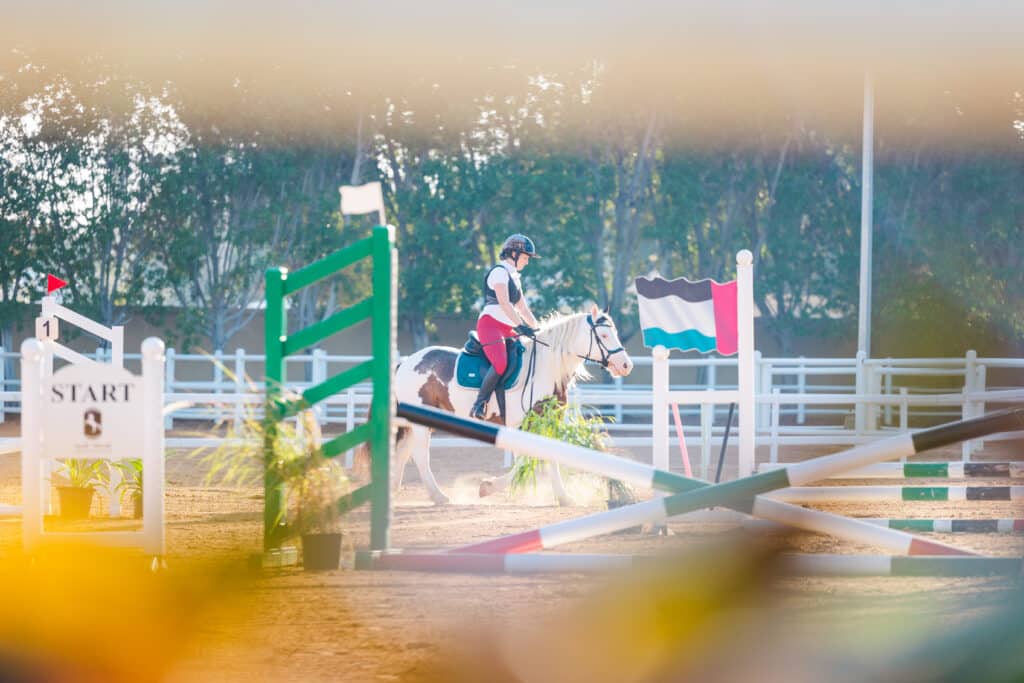
Here are a few other essential tips if you’re just starting out:
- Never stand behind a horse or make sudden movements that could lead to them spooking.
- If additional light is needed, avoid strobes or other lights that emit quick light flashes; these can also startle a horse.
- Horses are also sensitive to sound, so be careful not to make loud or sharp noises during your time together. (Don’t drop your lens cap if you can…ask me how I know.)
Plan your session
Just like when we photograph people, going into an equine session with a plan is always a good idea. If you can manage, send a questionnaire before your session to learn more about what type of photos the client is interested in taking. Black background portraits will require different lenses and set up vs portraits done of the horse and rider in a grassy field. If you’re brave enough to ask for a few Pinterest photos to better understand what they’re looking for, go for it! Just make sure to tell them to send five and not 2385.
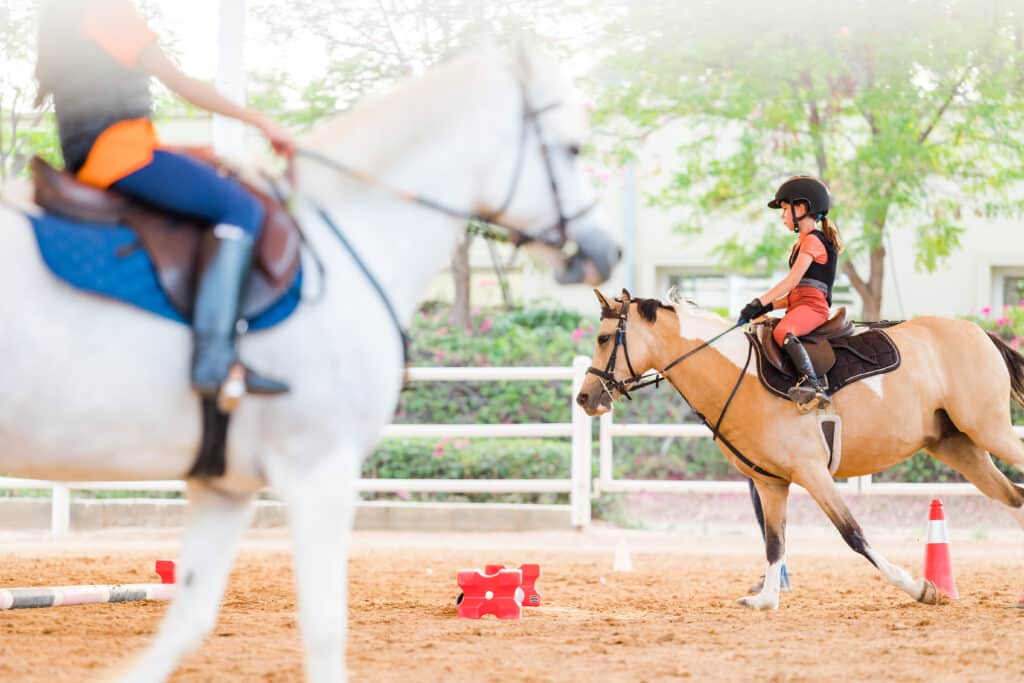
Types of Equine Photography
There are a few ways to capture horses, ranging from still portraits to show-stopping events.
Equine Portraits
Whether horse-only or horse-and-rider, the market for fine art portraits is incredibly vibrant among the equestrian community. Black background images are trendy and can quickly be done at the client’s home stable (if there are large barn doors).
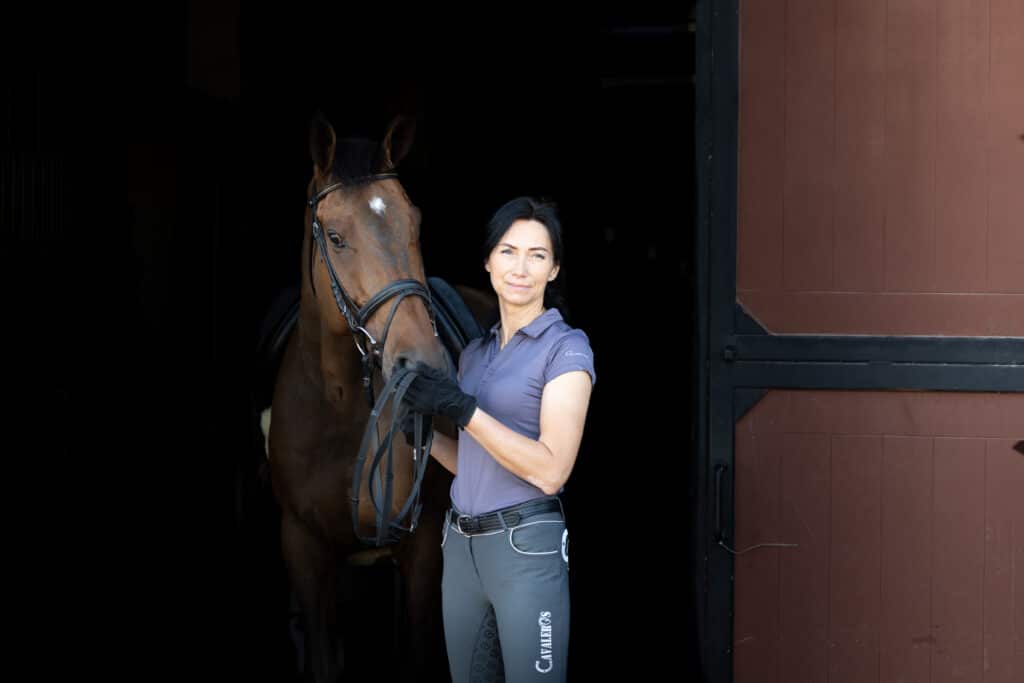
A horse and rider portrait can beautifully reflect the personality of both subjects and their relationship. Equine portraits work great for large prints, metals, and canvases.
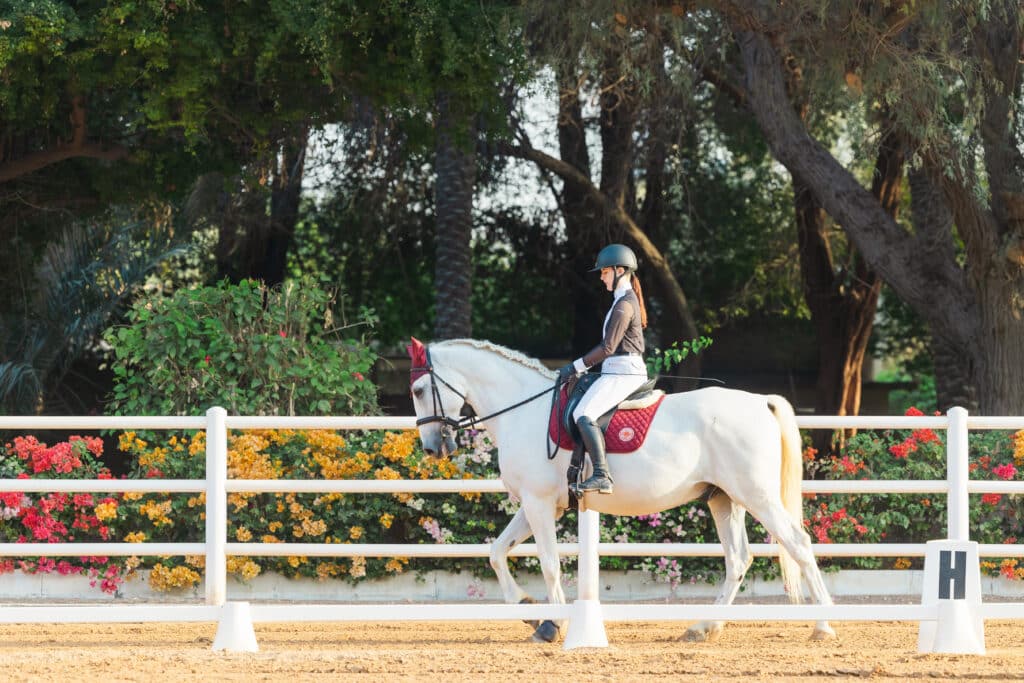
Here are a few types of portraits you can take:
- Horse and rider portraits (both on the ground and riding)
- Individual horse portraits (like black background shots or horse on a lead/halter that you can then edit out post-processing)
- Multiple horses together (this can get tricky, so make sure you have help)
Casual/Lifestyle
Show the horse running around the ranch, in the stables, in a workout arena, or being groomed. Think about chronicling a “day in the life” editorial-style shoot that shows both posed and candid moments.
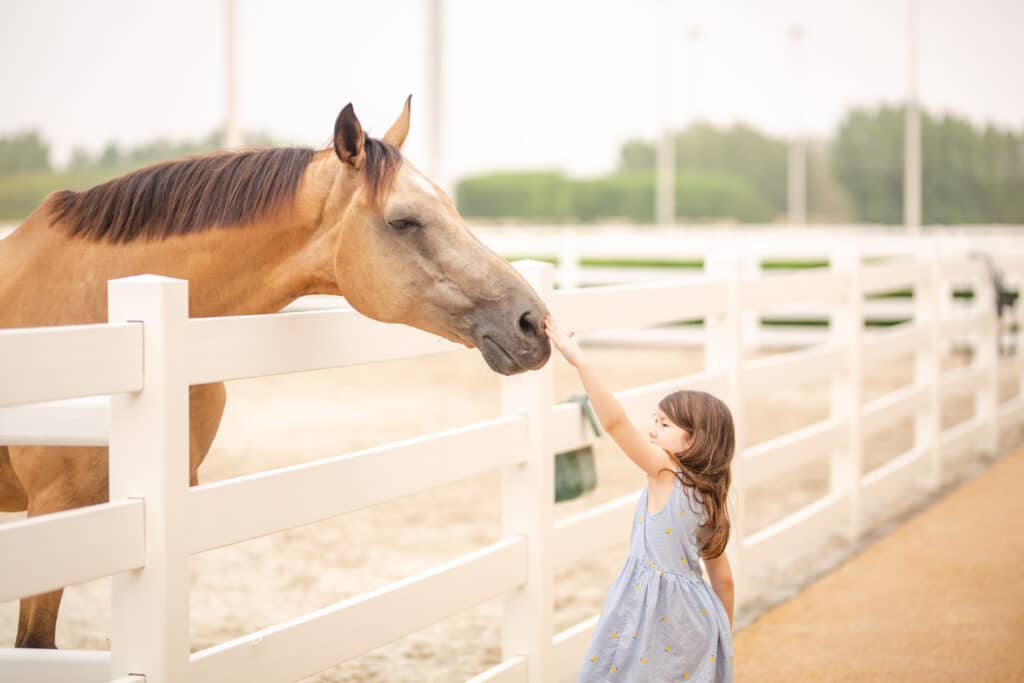
Shows and Events
Equine photography can be taken on location at different events ranging from dressage competitions, show jumping, equitation, hunter trials (also known as eventing), racing, Arabian beauty shows, and rodeos (to name a few).
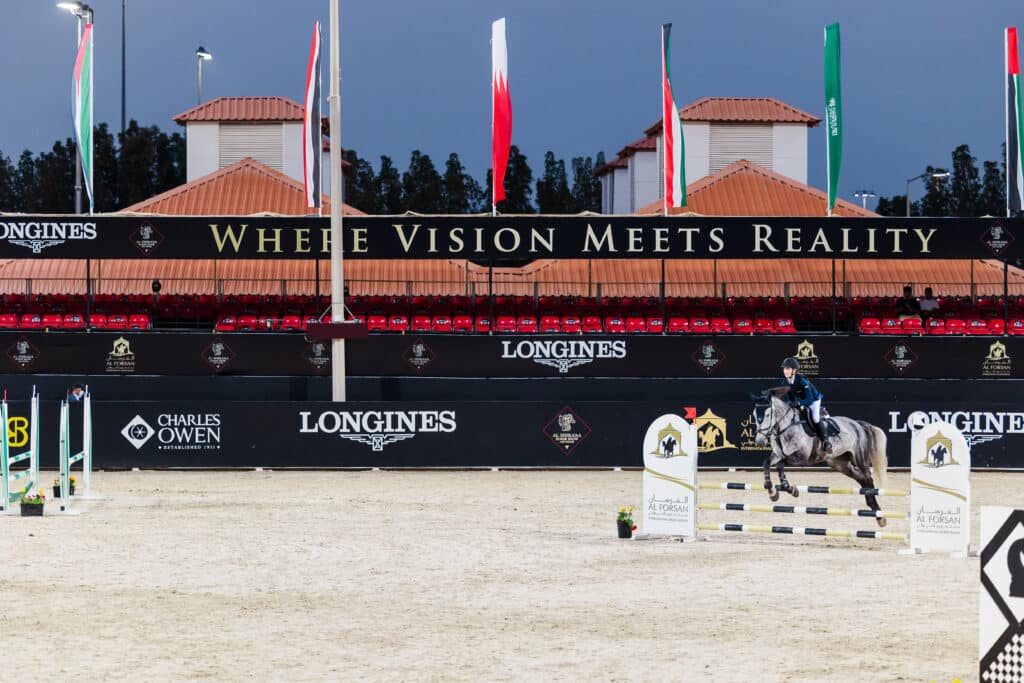
Dressage, Show Jumping, and Eventing
Equestrian shows can be a great opportunity to break into the photography space and meet owners and riders. Photographers book horses/riders BEFORE competitions to ensure they can photograph everyone. At times, multiple arenas will run simultaneously, which means you can’t be everywhere at once.
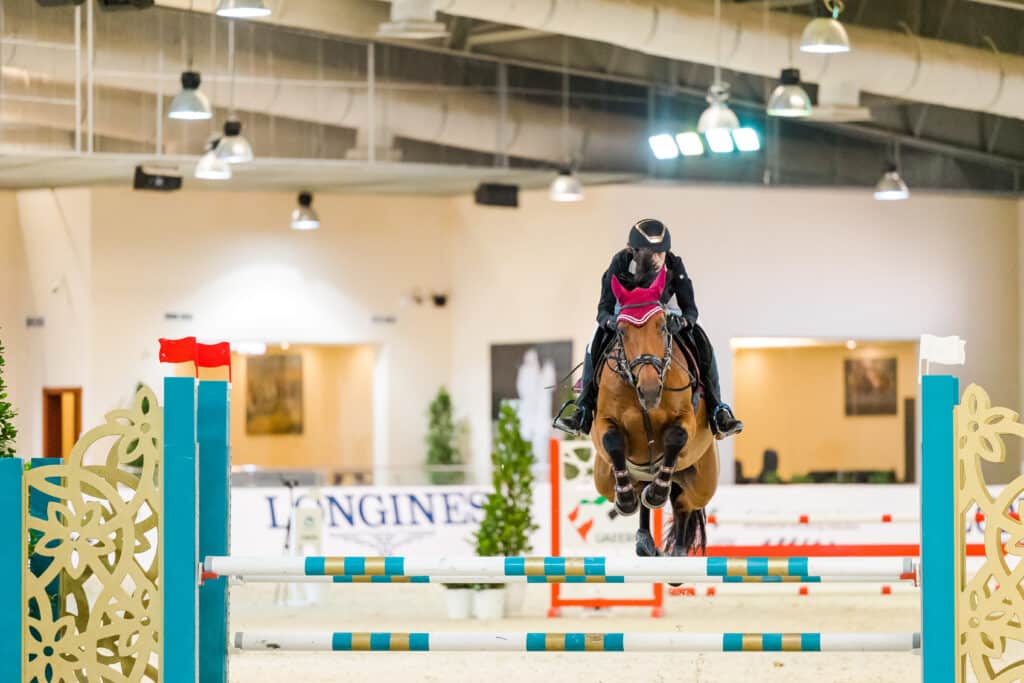
Horse Racing
The crown jewel of horse photography has traditionally been all aspects of the racing business–the stables, tacking up in the paddocks, the procession, pre-during-post race (especially if the winner’s circle is involved). This is big business for horse photographers and presents all the challenges and opportunities of portraits, documentary-style photos, and action images at one event.
Equipment for Horse Photography
You might need to adjust your gear bag for the type of horse photographs you plan to shoot. Depending on the size of the event space, portraits require a different set of lenses than action shots.
As with most photo specialties, the lens is the most important initial consideration. This gear list is intended for DSLR cameras, but many professional photographers have mastered the ability to snap great images in a pinch with their mobile phones.
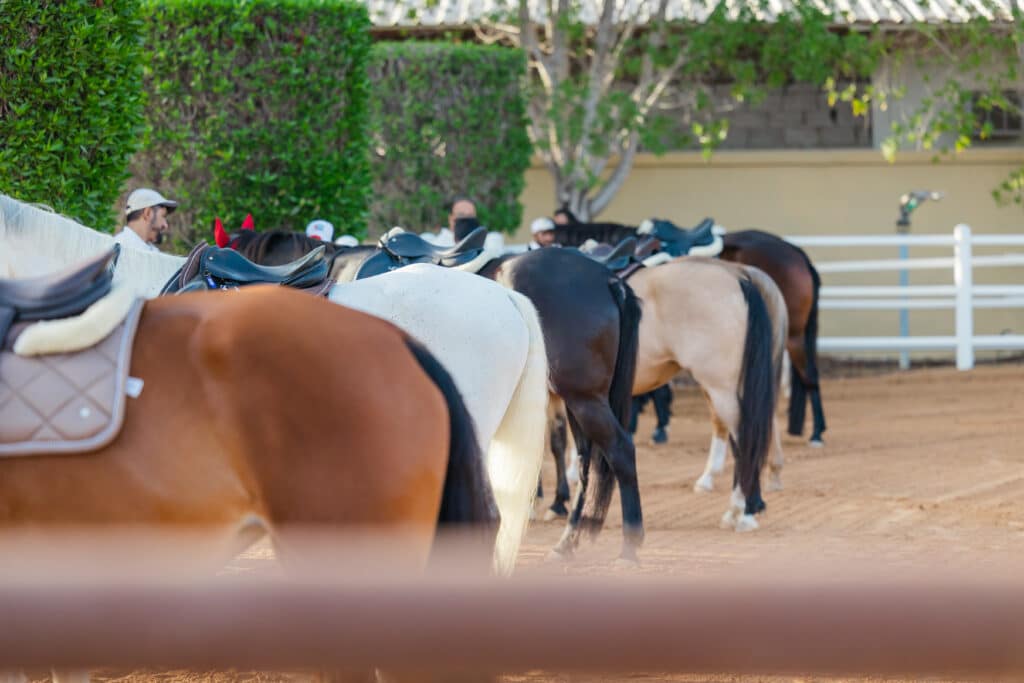
For portraits, we can recommend a few lenses to try (remember, there are companies that allow you to rent gear):
- 50mm: Nifty-fifties can be good for portraits; just be mindful of distortion.
- 85mm: 85s are a great choice for portraits (people and animals).
- 135mm: These fixed lenses can be amazing if you have the space to shoot with them.
Pro tip: Shoot at a higher aperture if you photograph the horse looking at your camera (around f/3.2+). Because their faces are so long, the horse’s ears will fall out of focus if you place the focus on their nose, for example.
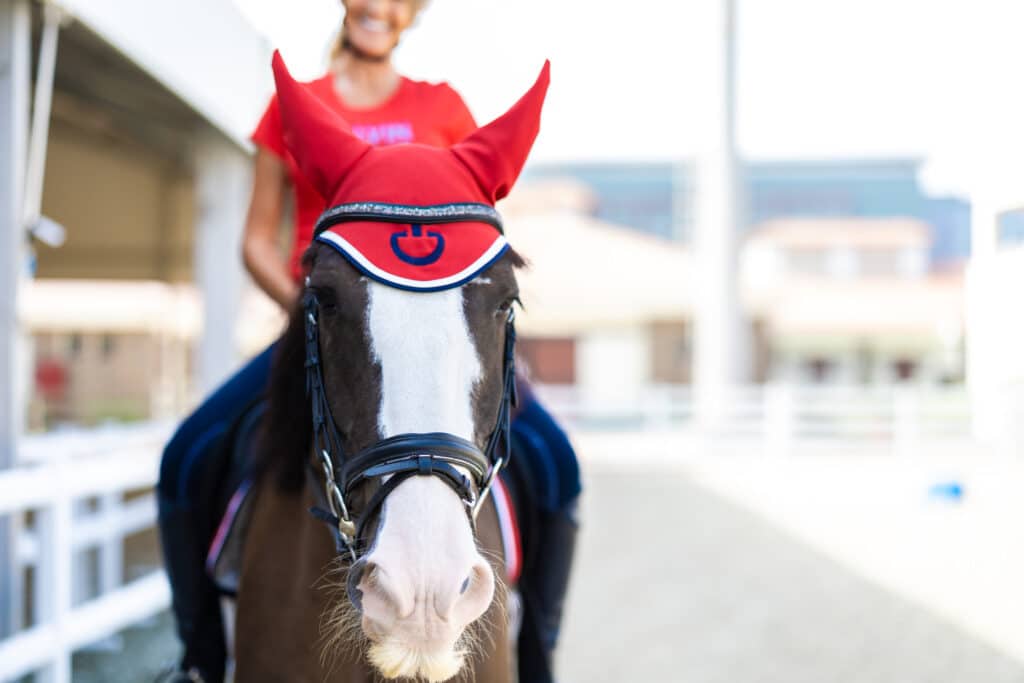
For event photography, consider using these lenses:
- 70-200mm: This lens is the workhorse of equine photographers for good reason. It’s the most affordable long-range lens and not particularly heavy (this will matter if you are at a show for 6 hours, trust me). If possible, go for the 2.8 version, as sometimes you’ll find yourself in low-light situations.
- 100-400mm: These lenses can give you a longer jumping, eventing, and racing range.
- 600mm: If you’re rich and have been working out, go for the 600mm, which will draw some attention from the crowd.
Here are some recommendations for other gear you should throw in your bag:
- Tripod/monopod (particularly helpful when using a larger zoom lens)
- Lens filter–A UV filter will help keep your lens clean and protected in dusty equine event locations
- Spare memory cards
- Preferred camera strap, halter, or brace
- Batteries and chargers (you’ll go through a battery FAST during an event, so always keep a spare battery charged and ready)
- Air duster/lens brush for dusty environments
- Weather protection (recommended for outdoor events)
Something else to consider if you will be shooting portraits is a small shaker or treats for the horse (we’re not opposed to bribing them), but always check with the owner or trainer beforehand.
The Challenges of Horse Event Photography
Besides the unpredictability of the horses, keep in mind that you will typically be in varying conditions based on the event. Make sure you know where you are taking photos to prepare for what you’ll need to expect.
If you can master variable lighting conditions, especially without using flash or reflectors, you will usually come away with great photos. Harsh midday sun can be challenging since the strong contrast between bright light and dark shadows yields images that require extra post-processing steps to ensure a great print. Remember to expose the highlights in harsh conditions, as it is generally possible to reduce the contrast of shadows in post-processing.
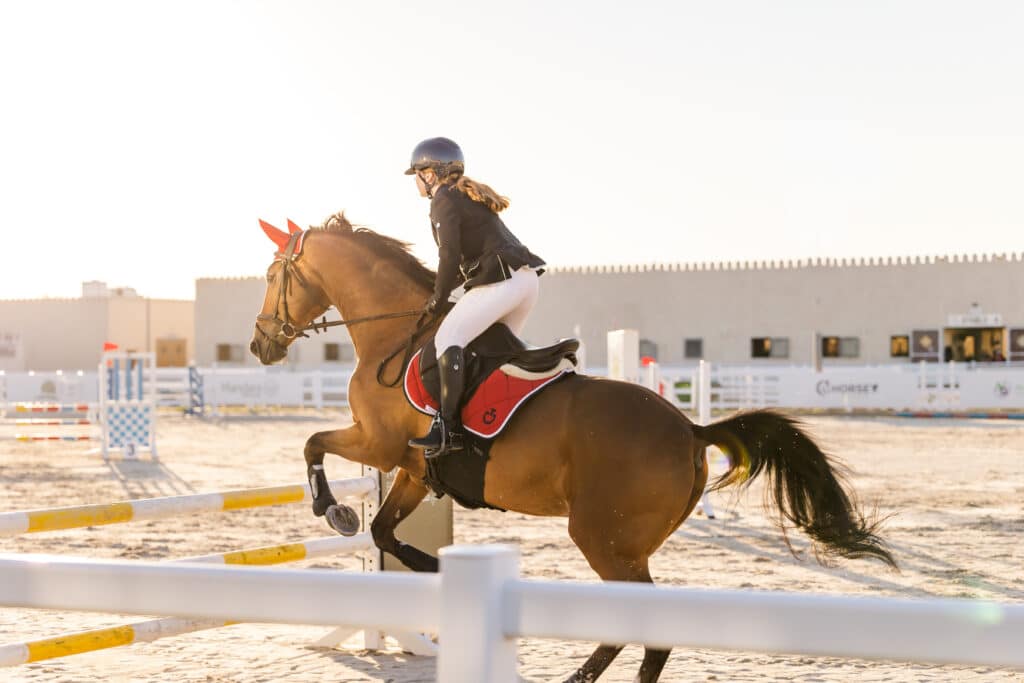
Days with moderate to heavy clouds create more even light, helping to reduce shadows–your position to the sun and your subject is still important, though! On cloudy days, shooting with your subject facing the light whenever possible is helpful, rather than being backlit in the early and late parts of the day.
For portraits, schedule early morning or during golden hour. Harsh light and heat make for an irritable horse (and rider).
Other challenging aspects of horse photography are the venues and fast action of equestrian and racing events. The arena will be large for jumping events, and your accessibility might be limited. Move around the venue to establish the best place to stand.
Camera Settings and Tips for Horse Event Photography
Jumping, racing, eventing, and rodeo events are high-speed activities, so you must shoot at shutter speeds of 1/1200th or faster.
For indoor dressage or beauty shows, you may get away with a shutter speed of 1/800th, but make sure to ALWAYS check your SS before starting a series of shots. There’s nothing worse than taking 100 photos only to discover they are all blurry.
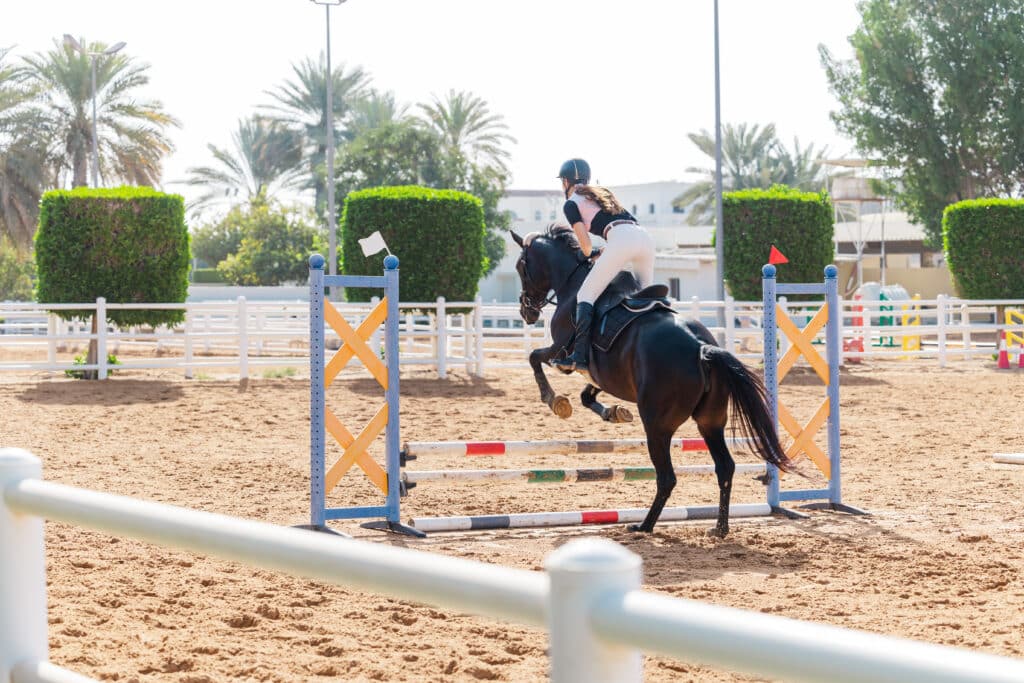
Pro tip: Do yourself a favor and learn manual mode. Auto mode won’t allow you to capture motion and light correctly.
Burst shooting mode can be a good option for equestrian show jumping and horse racing events.
Best Cameras for Horse Photography
No specific camera bodies are better or worse for horse photography, but if you find yourself in low-light conditions, full-frame DSLRs and mirrorless cameras are the way to go.
ISO capabilities may be your limiting factor, so make sure to test your camera in darker conditions to assess the quality of the photos.
Composition and Framing Horse Event Photos
You won’t always find yourself in the “perfect” location for event photos, but here are a few things to remember.
- Look for the best backlight
- Find leading lines that complement the image
- Play with detail shots and negative space
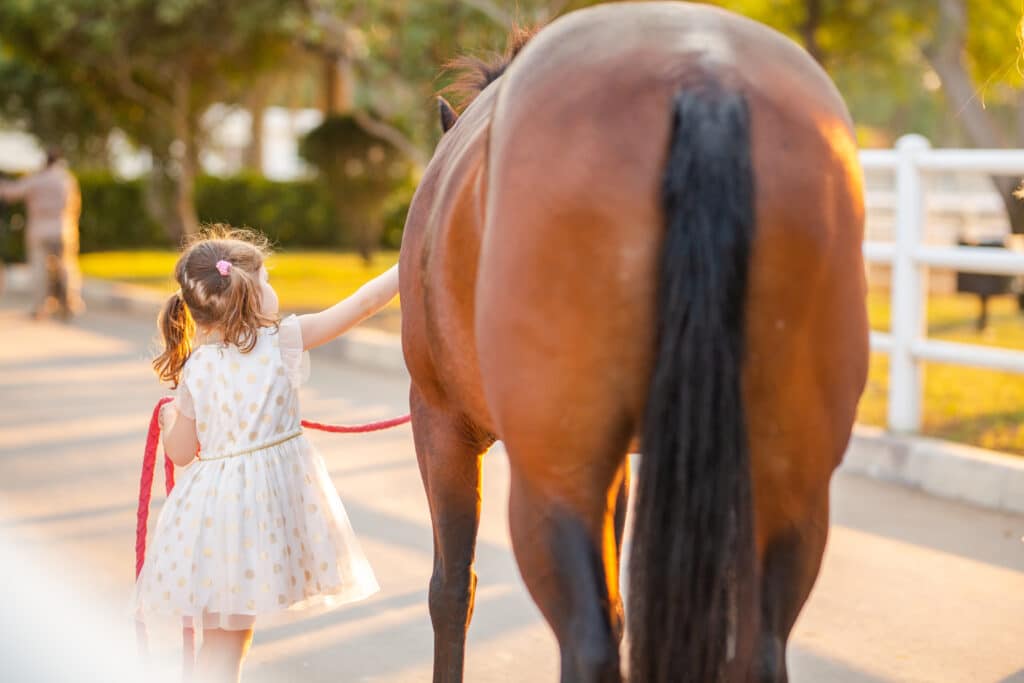
The main goal is to capture a range of photos in a short amount of time. This can also be done using multiple camera bodies with different lenses.
Keep an eye out for emotional connections between horses and owners. Sometimes, you will be lucky enough to catch a moment between the two, and they often prefer those photos to the actual event.
Framing action shots at equestrian, dressage, or racing events sometimes comes down to luck while pressing the shutter in burst or continuous mode. Often, these shots are best when the action is centered in the frame, but if you shoot dozens or hundreds of frames, you might end up with a few creative compositions
Strategies for Capturing Engaging Horse Event Images
Remember to look around at dressage, equestrian, and racing events. Even though your mission is to focus on the horse and client, there can be a lot of visible emotion in the crowd, in friends or family, or other horses and owners.
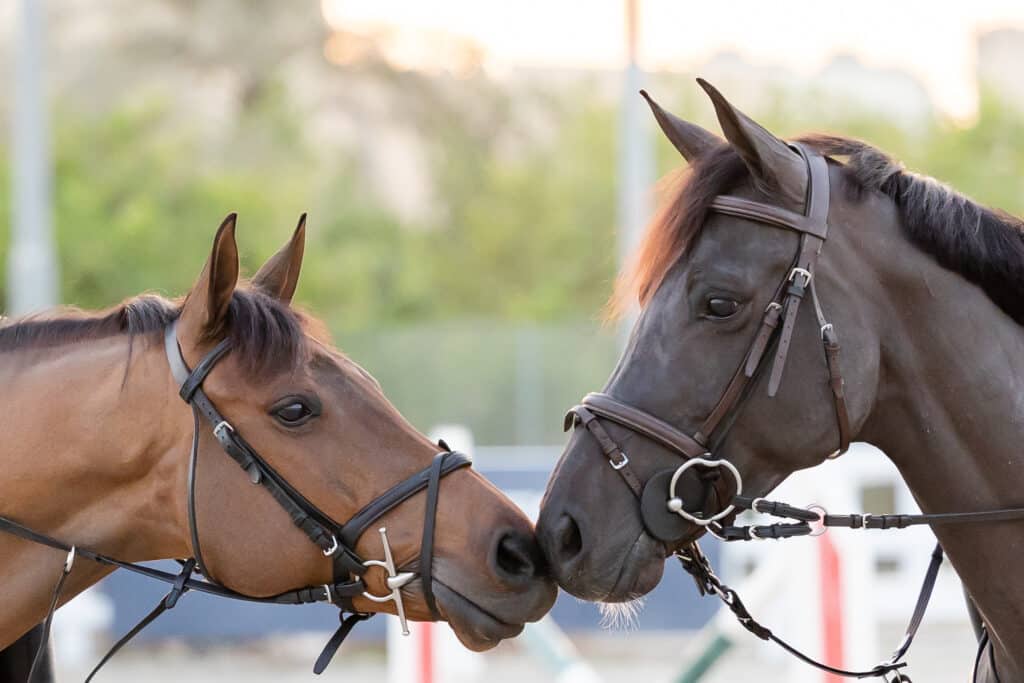
Washing, grooming, and tacking up before an event can be great opportunities to photograph a horse getting ready.
Before a competition event, locate the horse’s owner with friends or family in the grandstands. If you’re quick, you might be able to capture the moment the horse wins an event, then spin around and get the owner celebrating. Better yet, assign that task to a second photographer to make sure it’s all covered.
Post-Processing Tips for Horse Event Images
After the shoot, you might need to pay special attention to fixing exposure or focus issues in post-processing. If you get a great shot of your equine subject but there is a lot of background clutter on the ranch, you might need to blur and darken the background to shift visual emphasis. Creative cropping might also help an image go from “ok” to “fantastic.”
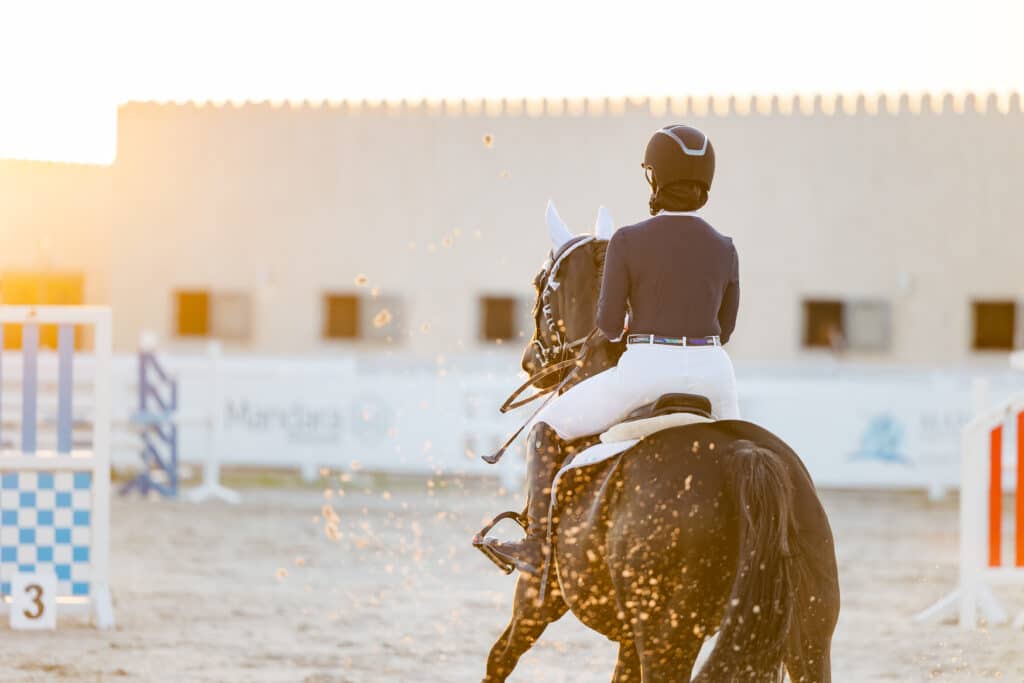
Exposure adjustments might be necessary since you are likely shooting outdoors and without flash fill. Lightroom, Photoshop, and other post-processing software can help you correct issues and make your images shine.
The biggest challenge in post-processing horse photos is the removal of halters. There are actually filters made for horse photography that help expedite removal after the fact. Current AI tools in photo editing software can also be a huge asset in removing halters or other unwanted details and filling in the space afterward.
Presenting and Sharing Your Horse Event Photography
Now, your images are ready to show to clients after an event. Online photography website resources like Zenfolio allow you to create client or event galleries and then share them for proofing, commenting, and even direct ordering.
Images are easy to organize and upload, with multiple options for uploading from a desktop or via a LR plugin.
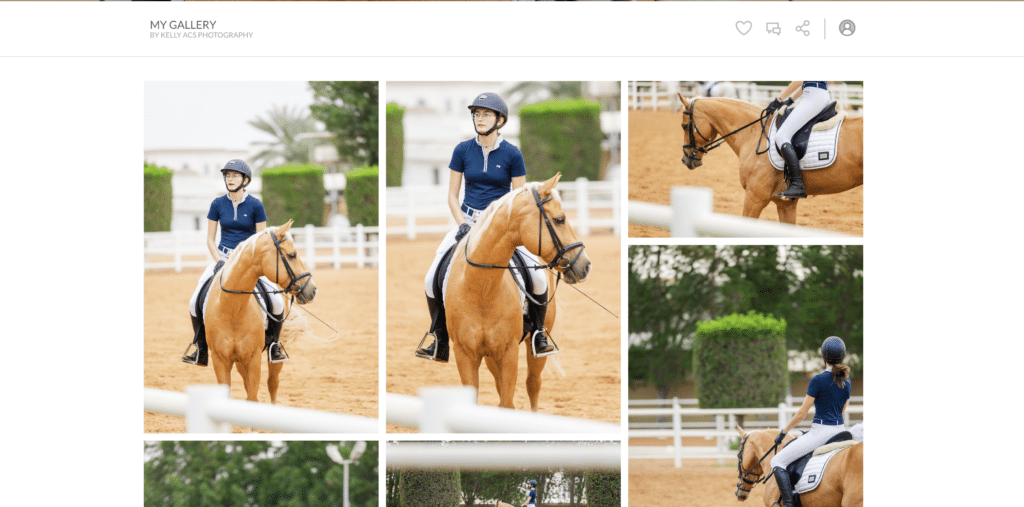
When at an event with a large camera and lens, people might even ask you how to find and purchase your images later. Be sure to bring plenty of business cards with your email, portfolio website address, and social media links like Instagram and Facebook/Meta. Also, bring a sign-up sheet to collect emails from interested parties or a QR code that links directly to your email list signup. As soon as you have images ready, reach out and let them know your gallery or portfolio website is ready for orders.
Building Your Equine Photography Business
Equine communities can be very close-knit and hard to break into.
Here are a few ways to break into the space:
- Start taking lessons at your local barn and meet instructors and other riders
- Offer a model call on local equine Facebook groups
- Ask friends who are equestrians if they are interested in a session
- Attend competitions and get the lay of the land (talk to other vendors and see who to talk to at the event)
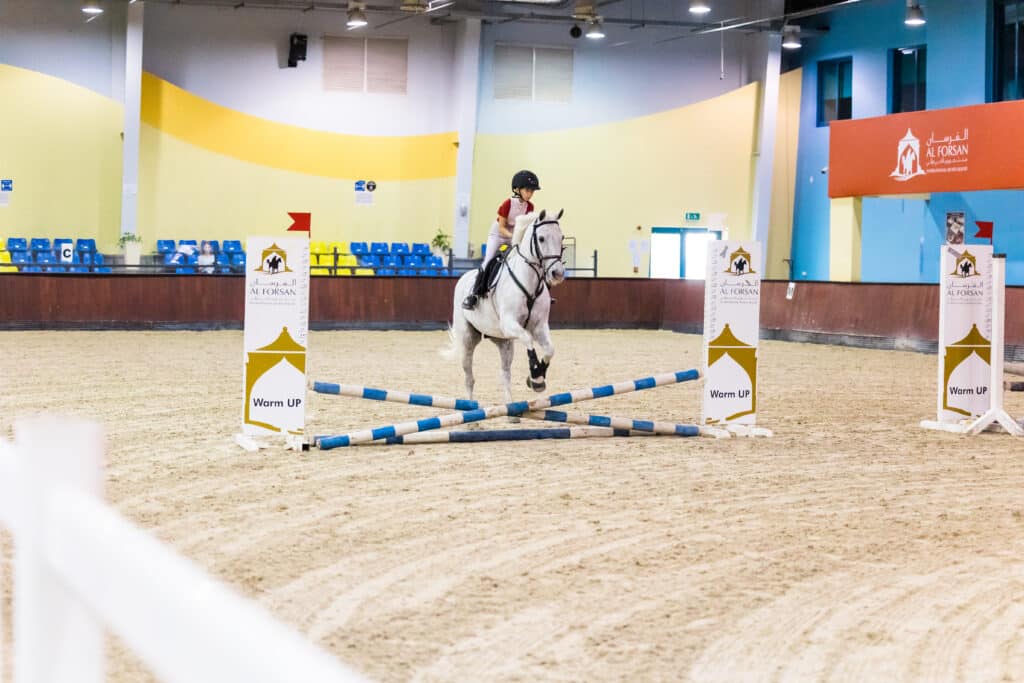
Once established as a serious horse photographer, happy clients, and referrals are often the best path for growing your business. Be sure you have a clean and easy-to-navigate portfolio website to share your best work and social media accounts so people can find you and become followers.
After getting a few good clients, ask them for testimonials, referrals, and about equestrian associations that you could join to support their industry and find new clients. Hand out business cards with your portfolio website and social media accounts, and include a QR code so people can easily find you with their phones and start following you immediately.
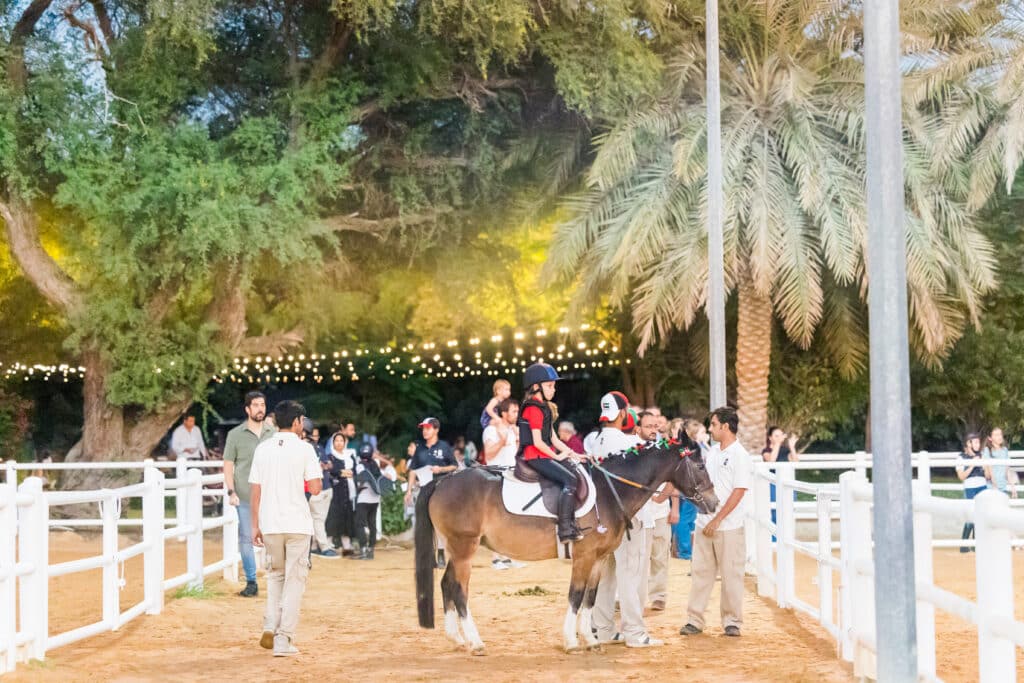
Saddle Up and Get Going
Horse photography can be very challenging, yet provides a dedicated photographer with steady, lucrative opportunities. Horse owners and enthusiasts are among any sport’s most passionate and devoted fans (if you’re a horse girl, you know what I mean). Some equine photographers specialize only in portraits – especially for promotion, sale, and stud marketing. Others make their mark with action photography in dressage, equestrian, or racing events.
When you decide to make hay in horse photography, check out Zenfolio for a gorgeous portfolio website with client and event galleries, easy sharing, and direct ordering capabilities.

